The American Society on Aging provides a profile of caregivers. I found it helpful and comprehensive.
A Profile of Informal and Family Caregivers
Definition
The term caregiver refers to anyone who provides assistance to someone else who needs it to maintain an optimal level of independence. Families provide the vast majority of care and are commonly referred to as "family caregivers." Caregivers may or may not live with the care recipient. The way the term family caregiver is defined by policymakers significantly affects the type of services provided and the cost of providing them. For example, some state-funded respite programs limit eligibility to family members living with the person needing care (e.g., a spouse). In this case, family members who assume major care responsibilities but do not live with the impaired person (e.g., adult children) are excluded from respite assistance.
Prevalence
Estimates vary on the number of caregivers in the United States, depending on the definition used:
Nearly one out of every four U.S. households (23 percent, or 22.4 million)provides care to a relative or friend aged 50 or older.
About 15 percent of U.S. adults care for a seriously ill or disabled family member.
About 13.3 million people -- 7 percent of U.S. adults -- are spouses or adult children of disabled older people and have the potential responsibility for their care. Of these, about 85 percent (or 11.4 million) are adult children.
About 7.3 million people are informal caregivers, defined as spouses, adult children, other relatives, and friends who provide unpaid help to disabled older people living in the community. Of these, about three-fifths (or 4.2 million) are spouses and adult children, and the remaining two-fifths (3.1 million) are other relatives, friends and neighbors.
Who are the caregivers?
Gender.
Caregiving is largely a women's issue. Nearly three out of four (72 percent) caregivers are female.
Age.
The average caregiver is 57 years old. However, more than one in three caregivers is an older adult herself: one quarter are between 65 and 75 years old, and another 10 percent are at least 75 years of age. One recent national survey found that the average age of caregivers is 46.
The median age of employed caregivers of the elderly is 45 years old; 28 percent are under 35 years of age and 15 percent are at least 65 years old.
Women in their 50s are more likely than older women to experience two or more caregiving episodes. These women are more likely than women in their 60s and 70s to live with the care recipient.
Relationship to care recipient.
An estimated 85 percent of caregivers are related to the care recipient.
In general, if the care recipient is married, the primary caregiver will be the spouse; otherwise adult children, typically adult daughters, will assume the caregiving role.
Nearly 23 percent of caregivers are wives, 13 percent are husbands, 29 percent are adult daughters, and 9 percent are sons. The remaining 26 percent are siblings, grandchildren, other relatives, and friends or neighbors.
Older generations also care for younger generations. Increasing numbers of mid-life and older women have primary responsibility for their grandchildren and great-grandchildren. There are some interesting cultural differences, with 12 percent of African American children living with grandparents, compared to 5.8 percent of Hispanic children and 3.6 percent of white children.
Living arrangements.
Nearly three out of four of caregivers live with the care recipient.
Between 20 percent and 40 percent of caregivers are in the "sandwich generation," with children under age 18 to care for in addition to their disabled older relative.
One-third of primary caregivers assume major care responsibilities because they live closer to the care recipient than other family members.
Nearly 7 million Americans, or 3.5 percent of the U.S. adult population are long-distance caregivers (those who live a distance of one hour or more from the older adult needing assistance). The average travel time for these caregivers to reach their relative is four hours.
Employed caregivers.
Between one-third and nearly two-thirds of caregivers are also employed outside the home. This trend is likely to continue as women continue to enter the labor force.
Between 7.4 percent and 11.8 percent of the workforce is involved in providing care for an older person.
An estimated 9 percent of caregivers quit their jobs to provide care. For adult daughters, this number rises to 12 percent.
Caregiving tasks.
Unlike most formal service providers, families provide care at night, over weekends, and on demand. Studies have found that from 53 percent to 69 percent of people with dementia are out of bed most nights -- waking the caregiver and requiring supervision.
Two-thirds (66 percent) of caregivers assist older people with activities of daily living (ADLs). Of these, 19 percent assist with one daily living task, 15 percent assist with two, and one-third (33 percent) assist with three or more.
Three out of four caregivers help with grocery shopping, transportation, and housework, and about 66 percent prepare meals or manage finances. Half help administer medications. These tasks are known as instrumental activities of daily living (IADLs).
Time spent caregiving.
The duration of caregiving can last from less than a year to over 40 years. The majority of caregivers provide unpaid assistance for one to four years; 20 percent however provide care for five years or longer.
Eighty percent of caregivers provide unpaid assistance seven days a week. On average, caregivers provide personal care assistance and household maintenance chores for 18 hours a week. Some 48 percent give care for eight hours or less, while 21 percent provide help for nine to 20 hours per week, and 14 percent give care for 21 hours per week or more. Eleven percent provide round-the-clock care.
Time spent caregiving varies by type of impairment. One statewide study of caregivers of cognitively impaired adults found caregivers spending an average of 13 hours per day providing care--more than a full-time job outside the home.
Who is being cared for?
Almost 100 million people in the United States have one or more chronic conditions.
Nearly 40 percent of older people living in the community -- 12 million people aged 65 and over -- are limited by chronic conditions. Of these, three million (or 10 percent of older people) are unable to perform adls. Additionally, an estimated 1.5 million older people needing long-term care live in nursing homes.
An estimated 10 percent of people 65 years of age and older, and nearly half of those 85 and older, suffer from Alzheimer's disease. People with Alzheimer's disease or another dementing illness can never safely be left alone and often require round-the-clock care.
Talking Points
--Almost 100 million people in the United States have one or more chronic conditions. Over the next twenty-five years, this number is expected to increase to 134 million Americans.
--Nearly one in four U.S. households is involved in caring for a relative or friend aged 50 or older.
--Caregiving is largely a women's issue. Some 72 percent of caregivers are female, mostly wives and adult daughters.
--The average age of a caregiver is 57. More than one in three, however, are older themselves (65 years of age and older).
--Caregiving can last from less than a year to over forty years. Some 80 percent of caregivers provide unpaid assistance seven days a week.
--People are likely to have more older people in their families today than in the past.
--By 2030, when the baby boomers reach age 65, one in five Americans will be at least 65, for a total of about 70 million older people, more than twice the number in 1996.
--Five social trends may affect the supply of caregivers in the future: (1) increasing divorce and remarriage rates; (2) increasing geographic mobility; (3) decreasing family size; (4) delayed childbearing; and (5) more women in the workplace.
--In the twenty-first century the demands placed on family and other informal caregivers are likely to escalate, affecting nearly every American family.
American Society on Aging 833 Market St., Suite 511 San Francisco, CA 94103 http://www.asaging.org info@asa.asaging.org
This article provided courtesy of the American Society on Aging
Subscribe to:
Post Comments (Atom)
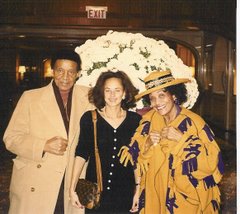
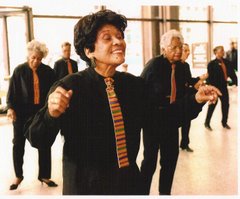
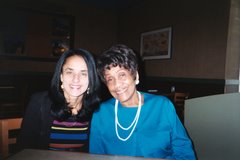
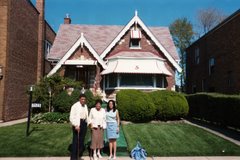
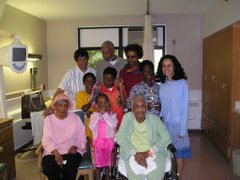

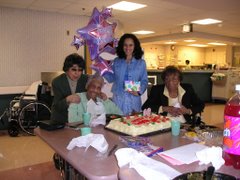
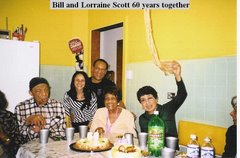
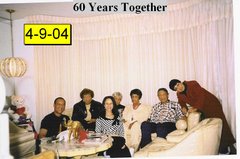

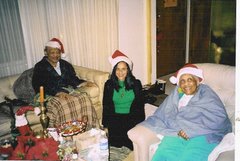
.jpg)
No comments:
Post a Comment